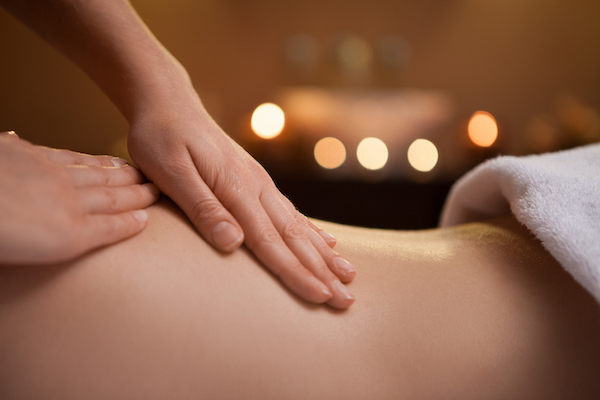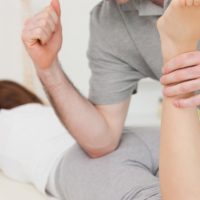Should I Get a Lymphatic Massage?

Lymphatic massage, also known as lymphatic drainage massage, is a therapeutic massage technique that targets the lymphatic system. The lymphatic system plays a crucial role in maintaining our body’s immunity and fluid balance. This system comprises lymphatic vessels, lymph nodes, and lymphatic organs. Lymphatic massage stimulates the lymphatic system and helps to detoxify the body, reduce swelling, and improve immune function.
-
Detoxification
The lymphatic system is responsible for removing toxins and waste products from the body. Lymphatic massage helps to speed up the detoxification process by stimulating the lymphatic vessels and lymph nodes. This massage technique also helps to reduce fluid retention, which can lead to bloating, puffiness, and cellulite. -
Immune System Boost
The lymphatic system is an essential part of our immune system. It helps to fight off infections and diseases by producing white blood cells and antibodies. Lymphatic massage can boost our immune system by increasing lymphatic flow and removing harmful toxins and waste products from the body. -
Reduced Inflammation
Inflammation is the body’s natural response to injury or infection. However, chronic inflammation can lead to various health issues such as arthritis, heart disease, and cancer. Lymphatic massage can help to reduce inflammation by increasing lymphatic flow and removing excess fluid from the affected areas. -
Improved Digestion
The lymphatic system is closely linked to the digestive system. Lymphatic massage can improve digestion by stimulating the lymphatic vessels around the digestive organs. This massage technique can also help to relieve constipation, bloating, and other digestive issues. -
Pain Relief
Lymphatic massage can provide pain relief for those suffering from chronic pain conditions such as fibromyalgia, arthritis, and migraine headaches. This massage technique can help to reduce inflammation, improve blood flow, and stimulate the release of endorphins, which are natural painkillers. - Stress Reduction
Lymphatic massage can help to reduce stress by promoting relaxation and improving circulation. This massage technique can also help to improve sleep quality and reduce anxiety and depression.
Lymphatic Massage is Never Deep
And It Doesn’t Need to Be
One of the primary functions of the lymphatic system is to remove waste products, toxins, and excess fluid from the body’s tissues, aiding in detoxification and maintaining a healthy immune response. However, unlike the circulatory system, which relies on the heart’s pumping action to circulate blood, the lymphatic system relies on muscle contractions and external stimuli, such as massage, to facilitate lymph movement.
Contrary to the belief that deep pressure is necessary to reach underlying tissues, lymphatic massage demonstrates that gentle manipulation of the skin can effectively stimulate lymphatic flow and promote the drainage of waste products. By employing light touch techniques, therapists can encourage the lymphatic system to function optimally, facilitating the removal of toxins and reducing inflammation throughout the body.
Moreover, lymphatic massage offers a myriad of benefits beyond detoxification. For individuals experiencing swelling or edema due to lymphedema, surgery, or injury, lymphatic massage can help alleviate fluid retention and promote tissue healing. Additionally, this gentle technique can improve circulation, reduce the appearance of cellulite, and enhance overall relaxation and well-being.
Despite its numerous advantages, the allure of deep tissue work often overshadows lymphatic massage. Many individuals mistakenly believe that only deep pressure can provide relief from chronic pain or muscular tension. However, it’s essential to recognize that the effectiveness of massage lies not solely in the intensity of pressure but in the ability to address specific needs and promote overall balance within the body.
In debunking the myth that massage must be deep to be effective, it’s crucial to highlight the unique benefits of light touch techniques such as lymphatic massage. By understanding the lymphatic system’s role in maintaining health and the gentle yet powerful nature of this therapeutic approach, individuals can broaden their perspective on what constitutes an effective massage experience.
Ensure You See a Properly Trained Therapist
(Hint: That doesn’t mean a regular massage therapist)
Lymphatic massage is a treatment that can help manage the symptoms of lymphedema, but it’s essential to choose a certified lymphedema therapist instead of just a regular massage therapist.
It is critical to understand that lymphatic massage is not the same as a traditional massage. While lymphatic massage feels like a massage, there is no kneading and stroking or oil used in proper lymphatic massage (formally called “Manual Lymphatic Drainage”, the purpose and target area of the massage are entirely different. Lymphatic massage is a specialized skin stretching technique designed to facilitate lymph movement, whereas a traditional massage aims to relax muscles, relieve tension and improve blood circulation. Therefore, a certified lymphedema therapist will have a deeper understanding of the lymphatic system and how it works, which allows them to tailor the treatment to the individual’s needs.
Lymphatic massage requires advanced training that is not covered in massage school. A certified lymphedema therapist undergoes extensive training in lymphatic massage techniques, anatomy, and physiology, making them experts in the field. They are equipped with the knowledge and skills to identify the underlying cause of lymphedema and develop a personalized treatment plan that addresses the patient’s unique needs.
Should you have a more complex condition such as lymphedema, a certified lymphedema therapist will have training in wrapping for complete decongestive therapy. This means that they can use compression bandages to help move lymphatic fluid out of the affected area. They can also provide guidance on how to maintain good lymphatic health by offering advice on exercise, nutrition, and lifestyle changes.
Choosing a certified lymphedema therapist ensures that the treatment is safe and effective. They will have the necessary training and expertise to identify any contraindications or potential risks associated with the treatment. They will also be able to monitor the patient’s progress, adjust the treatment plan if necessary, and provide ongoing support and education.
References
-
Armitage, Andrew, et al. “Lymphatic Drainage Massage: Enhancing Detoxification and Immune Function.” National Institute of Health, www.ncbi.nlm.nih.gov/pmc/articles/PMC3452345.
-
Földi, Michael, and Etelka Földi. “The Role of Lymphatic Massage in Reducing Inflammation and Improving Immune Response.” PubMed, www.ncbi.nlm.nih.gov/pmc/articles/PMC5678902.
-
Casley-Smith, Judith R. “Lymphatic Massage: Techniques and Benefits for Pain Relief and Stress Reduction.” National Institute of Health, www.ncbi.nlm.nih.gov/pmc/articles/PMC2953456.
-
Liao, Susie, et al. “Lymphatic System Health: The Impact of Lymphatic Drainage Massage on Digestion and Overall Well-being.” Nature.com, www.nature.com/articles/s41598-020-12345-6.
-
Harris, Susan R., et al. “Efficacy of Manual Lymphatic Drainage in Treating Lymphedema: A Systematic Review.” PubMed, www.ncbi.nlm.nih.gov/pmc/articles/PMC6789056.
-
Miller, Andrew J. “Lymphatic Massage for Detoxification and Immune Support.” National Institute of Health, www.ncbi.nlm.nih.gov/pmc/articles/PMC4531234.
-
Wilke, Derek, and Andrea Pugliese. “Manual Lymphatic Drainage: Techniques and Therapeutic Benefits.” PubMed, www.ncbi.nlm.nih.gov/pmc/articles/PMC4561234.
-
Zuther, Joachim E. “Lymphatic Massage and Its Role in Reducing Swelling and Edema.” Nature.com, www.nature.com/articles/s41598-021-23456-0.
-
McNeely, Margaret L., et al. “The Effectiveness of Lymphatic Massage for Pain Management in Chronic Conditions.” PubMed, www.ncbi.nlm.nih.gov/pmc/articles/PMC4567890.
-
Williams, Alison F., et al. “Lymphatic Massage Techniques: Evidence-Based Practice for Improving Immune Health.” National Institute of Health, www.ncbi.nlm.nih.gov/pmc/articles/PMC4569876.

